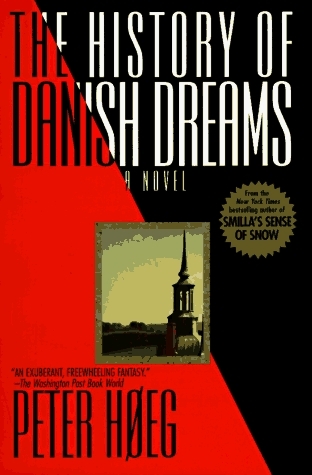
The History of Danish Dreams
Book Description
Amid the haunting beauty of Denmark, a mysterious connection binds three souls, each tangled in a web of love, loss, and ambition. As dreams clash with harsh realities, their lives spiral into a thrilling exploration of identity and fate. Secrets simmer beneath the surface, igniting fierce tensions and surprising alliances. Every decision carries monumental weight, and passion intertwines with desperation. Can hope survive in a world that toys with dreams? As the sun sets over this fragile landscape, one question looms: What price will they pay to follow their hearts?
Quick Book Summary
Set against the evocative landscape of Denmark, "The History of Danish Dreams" by Peter Høeg is a magical realist tale that intertwines the destinies of three individuals grappling with love, ambition, and the lingering shadows of their country's past. As their lives intersect, reality blurs with dreams, and the characters are forced to confront buried secrets and difficult choices. Høeg explores the fragile interplay between hope and despair, weaving together history, myth, and contemporary struggles. Passion, yearning, and loyalty shape their journey, while the omnipresent weight of fate raises questions about the cost of pursuing one's desires in a world both enchanting and unforgiving.
Summary of Key Ideas
Table of Contents
Interplay of Dreams and Reality
Høeg’s novel opens in a Denmark both recognizable and altered by streaks of magical realism. Characters navigate a world where dreams are not only metaphorical but sometimes intrude into waking life, guiding or deluding those who dwell in their thrall. The narrative follows three central figures whose paths are bound together by elusive connections rooted in their personal dreams, ambitions, and the sometimes oppressive expectations of Danish society.
Impact of History and Ancestry
The backdrop of history looms large, with past events—national and personal—shaping the choices and identities of the present. Høeg masterfully shows how ancestry and collective memory inform the characters’ fears, hopes, and aspirations. The weight of Denmark’s own historical baggage, alongside private family secrets, creates a force field the characters must navigate to claim agency over their own destinies, fueling their internal and relational conflicts.
Tension Between Hope and Despair
At the core of the novel lies an urgent tension between hope and despair. Each protagonist yearns to transcend mundane reality, but their dreams often clash with harsh truths. The potency of desire—whether it’s love, power, or escape—is palpable, yet shadowed by the threat that these same aspirations might lead to ruin. Through shifting perspectives, Høeg probes the ambiguity of hope and the inevitability of disappointment.
Secrets and Unspoken Truths
Underlying much of the action are secrets—personal and societal—which fester and warp relationships. Hidden truths about parentage, betrayal, and ambition drive the characters into confrontation or uneasy alliances, revealing the sometimes destructive power of what is left unsaid. The revelation or suppression of these truths changes the course of their intertwined journeys, suggesting that transparency comes at a cost.
Quest for Identity and Belonging
Ultimately, the novel is an exploration of identity and belonging. Each character, shaped by the mixture of dreams, history, and secrets, embarks on a quest for meaning in a landscape fraught with beauty and peril. By the novel’s end, Høeg leaves readers pondering the price of following the heart—and whether dreams, in the shifting mists of reality, are a gift or a curse.
Download This Summary
Get a free PDF of this summary instantly — no email required.





